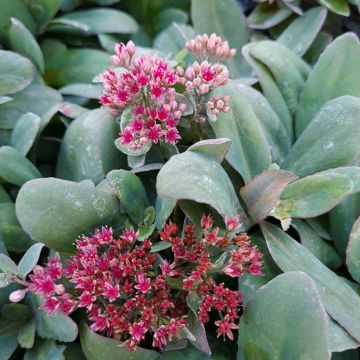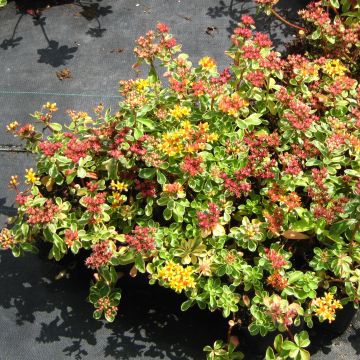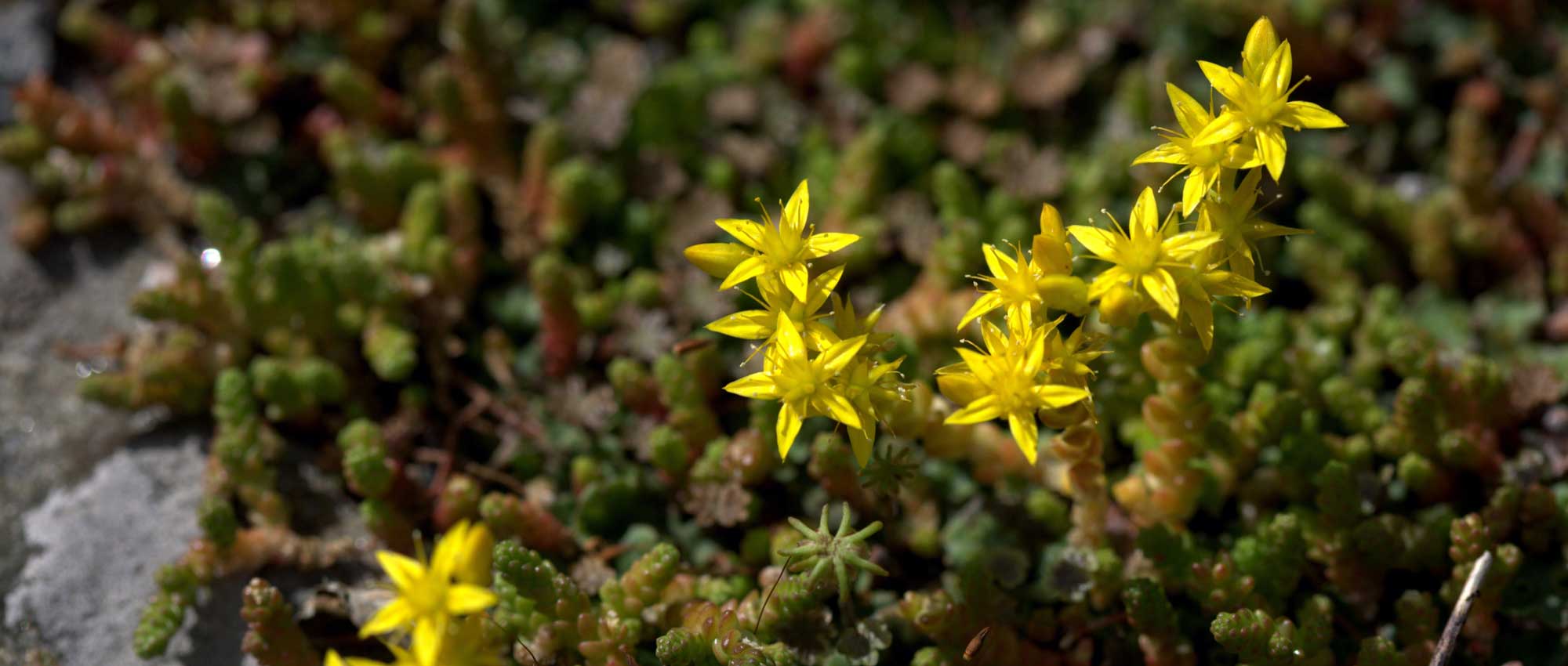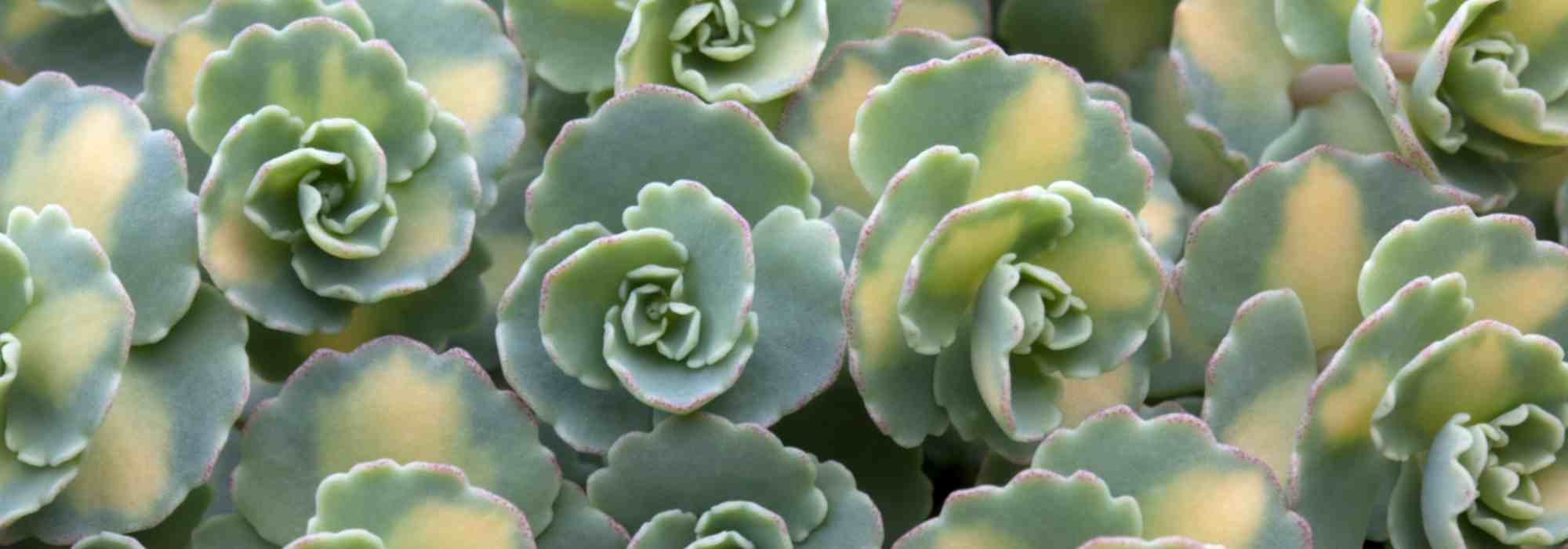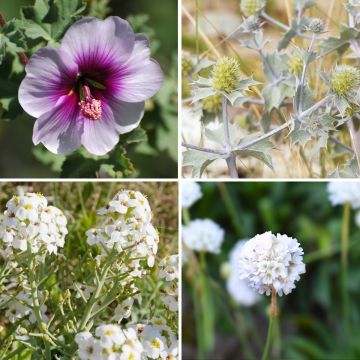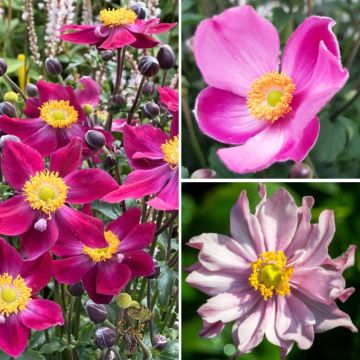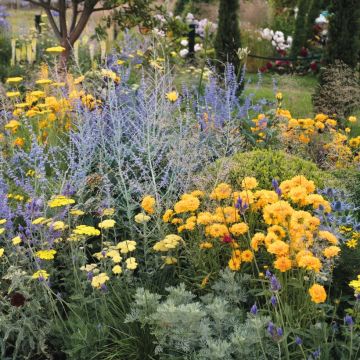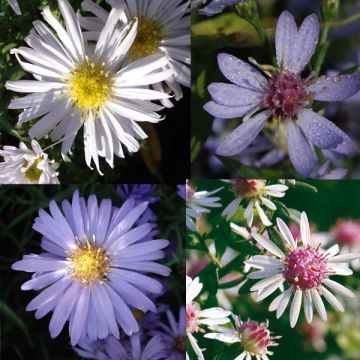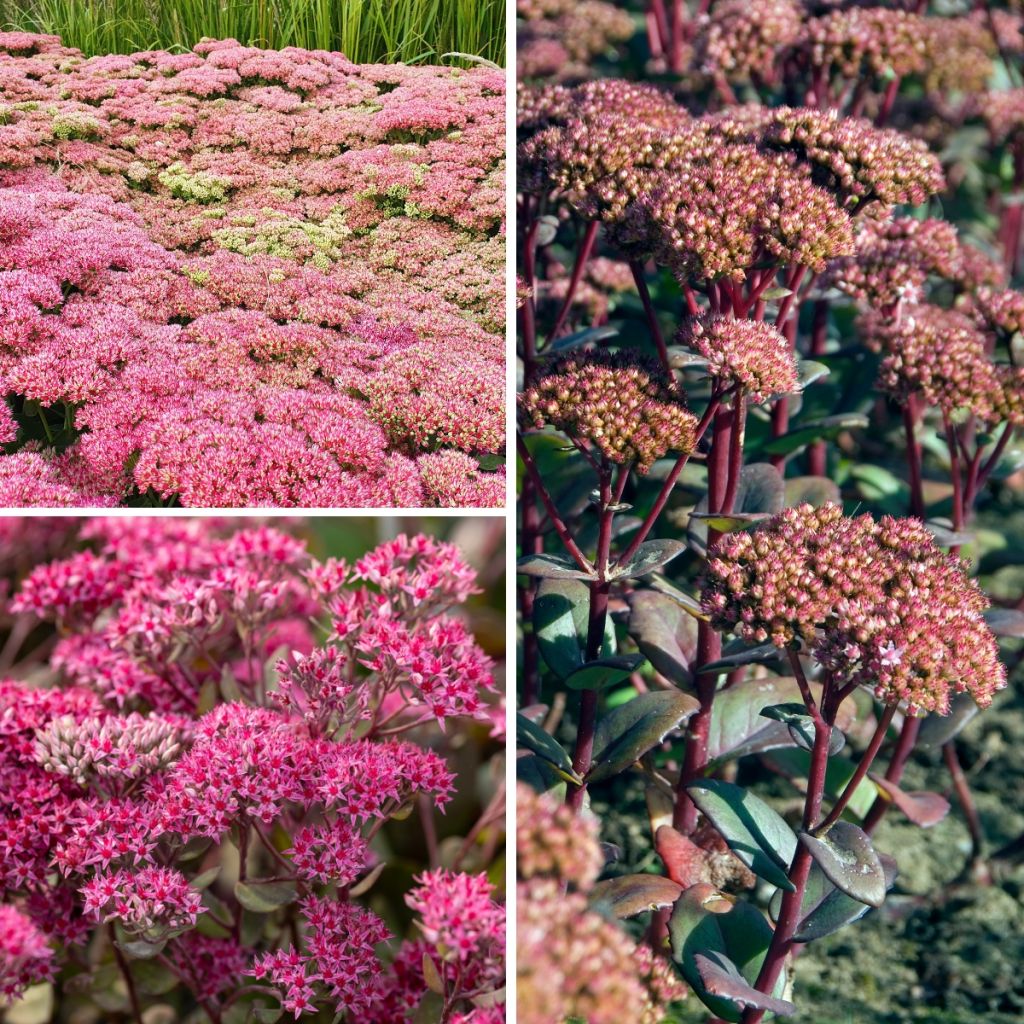

Sedum Collection - Matrona, Herbstfreude or Autumn Joy and Thunderhead
Sedum Collection - Matrona, Herbstfreude or Autumn Joy and Thunderhead
Sedum (Hylotelephium) Matrona, Herbstfreude (= Autumn Joy,) Thunderhead
stonecrop
Attention, the foliage is not evergreen...
Bernard , 08/10/2025
Special offer!
Receive a €20 voucher for any order over €90 (excluding delivery costs, credit notes, and plastic-free options)!
1- Add your favorite plants to your cart.
2- Once you have reached €90, confirm your order (you can even choose the delivery date!).
3- As soon as your order is shipped, you will receive an email containing your voucher code, valid for 3 months (90 days).
Your voucher is unique and can only be used once, for any order with a minimum value of €20, excluding delivery costs.
Can be combined with other current offers, non-divisible and non-refundable.
Home or relay delivery (depending on size and destination)
Schedule delivery date,
and select date in basket
This plant carries a 12 months recovery warranty
More information
We guarantee the quality of our plants for a full growing cycle, and will replace at our expense any plant that fails to recover under normal climatic and planting conditions.
Would this plant suit my garden?
Set up your Plantfit profile →
Collection items (3 plants)
Description
This collection of Autumn Sedums or Stonecrops brings together three remarkable, proven varieties that have a diversity of colours and textures. Sedum 'Herbstfreude' with its dark pink flowers, Sedum Thunderhead with its deep purple flowers, and Sedum 'Matrona' with its pale pink flowers and purple-green leaves. These perennials from the Crassulaceae family thrive in well-drained soils, in the sun, and are very resistant to drought. Their flowering is very attractive to pollinators. Their fleshy foliage is usually deciduous and they can withstand temperatures as low as -30°C.
The collection consists of:
1 x Sedum 'Herbstfreude' or 'Autumn Joy': This variety is characterised by its dark pink flowers that appear from August to November. It reaches a height of about 45 to 60 cm.
1 X Sedum (Hylotelephium) 'Thunderhead': This variety with intense purple flowers can reach a height of 50 to 60 cm. It is perfect for adding a touch of colour to borders and rock gardens.
1 X Sedum 'Matrona': Its green leaves tinged with pink-purple and its red stems make this stonecrop unique. It reaches a height of 60 cm and blooms from August to October. Its inflorescences are light pink.
The stonecrops in this collection can be planted in spring or autumn. They thrive in borders, rock gardens, or as edging plants. Choose a sunny exposure and plant them in well-drained, light soil that does not retain too much water. If necessary, mix garden soil with fine gravel. Plan for 6 to 9 plants per square metre, with a distance of 30 to 45 cm between plants.
The Sedums in this collection can be combined with many perennial plants, as well as with small bushes. Coreopsis 'Moonbeam' with its pale yellow flowers can be placed at the front of the border, contrasting with the stonecrops. Salvia nemorosa 'Caradonna' with its dark purple flowers can be interspersed among the Sedums, enriching the scene with its deep tones. An Aster x frikartii 'Mönch' can be positioned at the back to provide height, lightness, and the bright lavender blue of its flowering. Complete your arrangement with a small bush such as the Japanese Spirea 'Goldflame', its golden foliage adding a warm touch to the whole. This combination of plants creates a garden that is both aesthetic and ecological.
Flowering
Foliage
Plant habit
Botanical data
Sedum (Hylotelephium)
Matrona, Herbstfreude (= Autumn Joy,) Thunderhead
Crassulaceae
stonecrop
Cultivar or hybrid
Other Sedum
View all →Planting and care
Plant Sedum in ordinary soil, more or less rich, even very dry and chalky, but imperatively well-drained to protect the roots from the cold moisture of winter. This perennial tolerates clay soils in regions with dry winters. Excessive fertiliser can distort the plant. Install it in full sun, to enhance the foliage colouration. This plant is hardy once established. It needs some moisture during its growing period.
In pots, provide a layer of gravel for drainage. Prune the clump in winter when it is dry. Divide the plant after 3 to 4 years to encourage vigorous growth and prevent it from thinning out in the centre and the lateral stems from collapsing onto the ground.
Planting period
Intended location
Care
Planting & care advice
-
, onOrder confirmed
Reply from on Promesse de fleurs
Similar products
Haven't found what you were looking for?
Hardiness is the lowest winter temperature a plant can endure without suffering serious damage or even dying. However, hardiness is affected by location (a sheltered area, such as a patio), protection (winter cover) and soil type (hardiness is improved by well-drained soil).

Photo Sharing Terms & Conditions
In order to encourage gardeners to interact and share their experiences, Promesse de fleurs offers various media enabling content to be uploaded onto its Site - in particular via the ‘Photo sharing’ module.
The User agrees to refrain from:
- Posting any content that is illegal, prejudicial, insulting, racist, inciteful to hatred, revisionist, contrary to public decency, that infringes on privacy or on the privacy rights of third parties, in particular the publicity rights of persons and goods, intellectual property rights, or the right to privacy.
- Submitting content on behalf of a third party;
- Impersonate the identity of a third party and/or publish any personal information about a third party;
In general, the User undertakes to refrain from any unethical behaviour.
All Content (in particular text, comments, files, images, photos, videos, creative works, etc.), which may be subject to property or intellectual property rights, image or other private rights, shall remain the property of the User, subject to the limited rights granted by the terms of the licence granted by Promesse de fleurs as stated below. Users are at liberty to publish or not to publish such Content on the Site, notably via the ‘Photo Sharing’ facility, and accept that this Content shall be made public and freely accessible, notably on the Internet.
Users further acknowledge, undertake to have ,and guarantee that they hold all necessary rights and permissions to publish such material on the Site, in particular with regard to the legislation in force pertaining to any privacy, property, intellectual property, image, or contractual rights, or rights of any other nature. By publishing such Content on the Site, Users acknowledge accepting full liability as publishers of the Content within the meaning of the law, and grant Promesse de fleurs, free of charge, an inclusive, worldwide licence for the said Content for the entire duration of its publication, including all reproduction, representation, up/downloading, displaying, performing, transmission, and storage rights.
Users also grant permission for their name to be linked to the Content and accept that this link may not always be made available.
By engaging in posting material, Users consent to their Content becoming automatically accessible on the Internet, in particular on other sites and/or blogs and/or web pages of the Promesse de fleurs site, including in particular social pages and the Promesse de fleurs catalogue.
Users may secure the removal of entrusted content free of charge by issuing a simple request via our contact form.
The flowering period indicated on our website applies to countries and regions located in USDA zone 8 (France, the United Kingdom, Ireland, the Netherlands, etc.)
It will vary according to where you live:
- In zones 9 to 10 (Italy, Spain, Greece, etc.), flowering will occur about 2 to 4 weeks earlier.
- In zones 6 to 7 (Germany, Poland, Slovenia, and lower mountainous regions), flowering will be delayed by 2 to 3 weeks.
- In zone 5 (Central Europe, Scandinavia), blooming will be delayed by 3 to 5 weeks.
In temperate climates, pruning of spring-flowering shrubs (forsythia, spireas, etc.) should be done just after flowering.
Pruning of summer-flowering shrubs (Indian Lilac, Perovskia, etc.) can be done in winter or spring.
In cold regions as well as with frost-sensitive plants, avoid pruning too early when severe frosts may still occur.
The planting period indicated on our website applies to countries and regions located in USDA zone 8 (France, United Kingdom, Ireland, Netherlands).
It will vary according to where you live:
- In Mediterranean zones (Marseille, Madrid, Milan, etc.), autumn and winter are the best planting periods.
- In continental zones (Strasbourg, Munich, Vienna, etc.), delay planting by 2 to 3 weeks in spring and bring it forward by 2 to 4 weeks in autumn.
- In mountainous regions (the Alps, Pyrenees, Carpathians, etc.), it is best to plant in late spring (May-June) or late summer (August-September).
The harvesting period indicated on our website applies to countries and regions in USDA zone 8 (France, England, Ireland, the Netherlands).
In colder areas (Scandinavia, Poland, Austria...) fruit and vegetable harvests are likely to be delayed by 3-4 weeks.
In warmer areas (Italy, Spain, Greece, etc.), harvesting will probably take place earlier, depending on weather conditions.
The sowing periods indicated on our website apply to countries and regions within USDA Zone 8 (France, UK, Ireland, Netherlands).
In colder areas (Scandinavia, Poland, Austria...), delay any outdoor sowing by 3-4 weeks, or sow under glass.
In warmer climes (Italy, Spain, Greece, etc.), bring outdoor sowing forward by a few weeks.






































